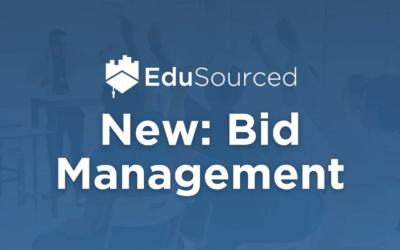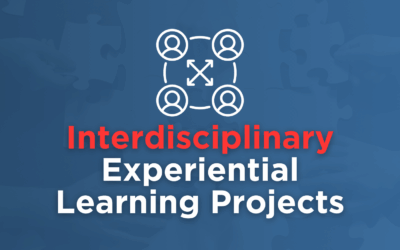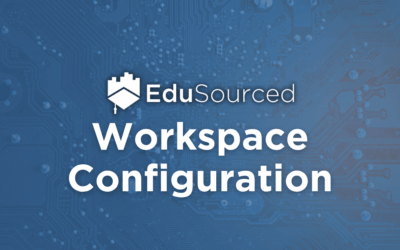For years, economists, educators, and employers have been sounding the alarm about the “skills gap” – the widening chasm between employers’ needs and workers’ capabilities. In many industries, there simply aren’t enough skilled workers to fill open positions.
The skills gap is particularly acute in the manufacturing sector, where a 2015 Deloitte-Manufacturing Institute study projected that, if current industry growth trends hold, up to 2 million skilled positions could go unfilled by 2025. However, the problem affects other sectors too, including the rapidly growing IT industry.
Remedying the skills gap is a complex, long-term project that requires buy-in from millions of workers, thousands of private employers, and countless public and private institutions. University-sponsored experiential education initiatives are undoubtedly part of the solution, as they facilitate on-the-job student learning (and, from employers’ perspectives, candidate training) in a low-stakes setting.
Is it really worthwhile for universities to devote ever more precious resources to setting up their own experiential learning programs, rather than outsourcing to third-party partners or leaving students entirely to their own devices? Yes, it is. Here’s why your institution needs an active experiential learning program – or, if you already have such a program, why you need to raise its profile now.
6 Benefits of a Well Organized Experiential Learning Program
Forging Meaningful and Differentiated Relations with your Employers
The truism, “your network is your net worth,” usually applies to individuals’ professional networks. However, institutional networks are no less important – and they’re likely to become even more so in an increasingly skills-driven economy.An experiential learning program is a great way to get your institution’s foot in the door with prominent (and not so prominent) local employers and nonprofit organizations. Every student placed with a local employer is a potential ambassador for your institution: a living embodiment of the vigor of its admissions department and the quality of its instructors. Despite your team’s best efforts, some of the employers with which you place experiential learning participants are liable to know little to nothing about your institution, creating a rare opportunity to make a powerful first impression.
Moreover, capable experiential learning participants are like catnip for talent-starved employers. If your institution can reliably supply high-caliber students (and, later, job applicants), their thinking goes, perhaps the factors that prepare those students deserve more support: one-off or sustaining donations, endowed scholarships, research grants.
Develop a Reputation for Building Real-World Skills
Employers staring down the barrel of the skills gap can’t always find qualified workers with years of industry- or position-specific experience, so they place immense value on freshly graduated job candidates with verifiable real-world skills. Predictably, students and recent graduates seek educational opportunities that develop and fortify such skills. Employers and candidates want the same thing: curricula that go beyond rote or theoretical classroom instruction and reinforce the sorts of technical capabilities that are increasingly indispensable in a rapidly changing economy.Experiential learning initiatives satisfy skills-related demands on both sides of the employer-employee divide. And, for resource-strapped universities, they do so equitably – without requiring overstretched academic departments to shoulder the lion’s share of the financial and logistical burden.
Become a Source of Top Talent
“Talent” can be a frustratingly subjective concept that’s not always possible to quantify or value. In some ways, its very definition is up for debate – depending on who you ask, “talent” means very different things. A visionary with a rare knack for turning a broad-strokes vision into an actionable business model or process is utterly useless in a skilled fabrication job that requires unflinching devotion to a well-worn process. A mathematical savant is apt to flail in a setting that demands creative or unorthodox solutions.In today’s business lexicon, “talent” very often means “technical skills.” Under this definition, experiential learning initiatives necessarily produce talented job candidates: students and graduates who’ve absorbed and assimilated their program’s lessons. These candidates are better prepared to hit the ground running in the first real-world jobs, whether with their experiential learning partner or another talent-starved employer.
Produce Well-Rounded Graduates
Though higher education is increasingly viewed through a “skills first” lens, many degree programs still make room for subjective instruction and self-discovery. These programs impart soft skills, such as critical thinking and verbal communication, on which most employers place tremendous value. Graduates who possess ample soft skills are said to be well-rounded, or to be endowed with what the American Association of Colleges & Universities terms “civic literacy.”Well rounded, literate graduates are more adaptable to changing workplace conditions, better suited to team and group settings, and more likely to think outside the box in situations that demand creative or ad hoc solutions. Most employers prefer technically competent, well-rounded candidates to equally competent, “unrounded” candidates. That’s great news for well-rounded candidates, who are more likely to be hired than their less attractive counterparts. And it’s a powerful argument for experiential learning programs, which immerse students in complex workplace environments that foster soft skills, such as interpersonal communication, even as they impart more easily quantified technical competencies.
Boost Your Post-Graduation Job Placement Rates
It’s hard to blame university applicants facing six-figure debt loads – which often drive students to consider studying abroad in lower-cost locales – to favor institutions with high job placement rates for recent graduates. Though a student’s participation in an experiential learning program doesn’t guarantee that the experiential learning partner will subsequently hire the same student, or even have a position open when the student comes looking for a job, experiential learning programs certainly do serve as de facto talent pools from which partner employers can draw at will.All else being equal, candidates who’ve previously had the chance to showcase their skills in experiential learning programs are more likely to be hired by those programs’ employer partners. That’s great news for your institution’s post-graduation job placement rates – and its overall reputation for giving graduates a leg up in the employment marketplace.
✅ Take a deeper dive: Career Services professional Gina Bortel, from University of Colorado Leeds School of Business, details the impact experiential learning projets have had on their student’s career outcomes here.
Deliver Results for Your Donors and Alumni
It’s not just prospective students who care about post-graduation job placement rates. Current and prospective donors also care deeply about the ease and speed with which graduates move into the workforce. They see this metric as a key proxy for overall institutional performance, and aren’t shy about allocating funds accordingly.A robust experiential learning initiative, particularly when backed by a comprehensive management and analytics solution like EduSourced’s EL-MS, demonstrates to donors that your institution is serious about forging partnerships with local business partners and ensuring that its graduates get a better-than-fair shake at the job fair.
Have a Ready-Made Press Pipeline
The higher education industry is more competitive than ever. Your institution’s public profile directly – and sensitively – affects application rates, selectivity, fundraising performance, and a host of other important factors. A strong experiential learning ecosystem is vital to creating and holding the public’s attention. Partnerships between your institution and high-profile local employers present rich marketing opportunities: case studies, blog posts, video interviews, and more on your institution’s website; and press releases, media pitches, and social media posts, all designed to attract press coverage and build organic buzz, for digital points beyond.
Final Thoughts: Closing the Skills Gap
Most educators have long since removed their sepia-tinted glasses and faced higher education’s stark reality. Gone are the days, if they were ever really here, when students spent years in unfettered pursuit of objective truth.
For better or worse, modern education is commoditized and standardized, given over to a currency of credits, references, and technical certifications. Well-endowed liberal arts institutions fight back, with varying degrees of success, but the march toward skills-based mass education is as unmistakable as it is irreversible. And so, the question on the minds of educators and administrators need not be “Does my institution need an experiential learning program?” so much as “How can my institution make its experiential learning program the best it can be?”
Ready to invest in a more organized experiential learning approach? Click here to schedule a demo of EduSourced, the most widely adopted platform for experiential learning management.
John Pullman writes about higher education opportunities, small business, and careers.




